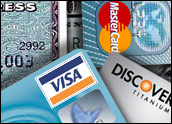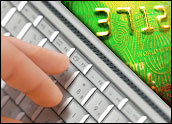
While bill payers and many businesses have been slow to adopt cyber billing, consumers are much moreaccepting of paying their monthly bills electronically. Still, consumers often face a struggle withmerchants who don’t make e-payments a priority or the process of paying online easy to set up.
Acceptance of e-billing is not as favorable yet as it should be, Mike Bodetti, president and CEO of TnTExpense Management, said in Part 1 of this series.
Some merchants provide their customers with both paper and e-bills, with an option to opt out of monthlymailings. Few merchants have completely adopted paperless billing.
“There is no reason or advantage for using paper bills. Paper billing entails added costs suchas storage, archiving, shredding,” Bodetti told TechNewsWorld.
Proponents of paying bills online raise much the same argument. Two out of every three households withInternet access pay bills online, according to Eric Leiserson, senior marketing analyst for CheckFree.
“Consumers are more protected against theft paying bills online than leaving a paper trail. Most ID theftsoccur with paper transactions, not online payments,” Leiserson told TechNewsWorld.
Safe and Convenient
Getting involved with online bill paying is far from troublesome, proponents say. It can save time, save money, save hassle and even improve your credit score by helping pay your bills on time.
“Of all the conveniences the Internet has brought — buying books and CDs day and night, receivingwork documents in a flash and enabling free communication with friends around the globe — one of the most useful is online bill payment,” Andrew Housser, co-CEO of Bills.com, told TechNewsWorld. Bills.com is a one-stop online portal to educate consumers about all things related to e-commerce.
Many credit card companies and banks handling store credit accounts put online payment instructions oneach bill. Consumers can pay the bill directly from that Web site through a wire transfer from theirchecking account, often for free. Many banks provide similar online bill paying services from their own Web sites. Consumers have a third option by using online bill paying services such as CheckFree or othercompanies.
“I’ve been paying bills online for several years, and the biggest pitfall so far is when the companysilently changes its return address. I’ve got my online payees set up, so I keep sending payment to theold address until they start getting returned. Companies that receive online bill payments should notifytheir customers, in the statement and by e-mail if possible, when their addresses change,” SallyHerigstad, a Certified Public Accountant and author of “Help! I Can’t Pay My Bills,” told TechNewsWorld.
The Setup
Consumers have two types of online bill pay. The first is to set up with the consumer’s bank or withfinancial software such as Quicken or Microsoft Money. The second is set up with the company that issues the bill. There are pros and cons to both, warned Elizabeth Potts Weinstein, a retired Certified Financial Planner, lawyer and owner of The Wealth Spa.
Paying online through one’s bank is useful to both pay regular payments that are the same every month, such as mortgage or rent, and to pay bills that can be sent directly from the company, such as utilities.Paying bills through a company tends to be used for payments that fluctuate from month to month, likeutility payments, she said.
“Understand how online bill pay works. Some consumers sign up for online bill pay services through their banks or credit unions. Others use stand-alone services. Independent bill pay services offer predictable fees and stability, even if the consumer changes banks. Some companies charge for the service, while others include it free, generally for individuals with fewer transactions each month,” explained Housser.
Not Foolproof
Regardless of which online bill paying method is selected, consumers have to pay attention to monthlystatements and changing circumstances. It is easy to lose track of things after completing the one-time set up.
For instance, one danger in using electronic bill pay’s automatic pay feature is not noticing an interestrate increase in a credit card or adjustable mortgage account. Then, you may underpay your payment, unlessyou are regularly reviewing your statements.
“This happened to me with my home equity line of credit when it moved from the six-month fixed rate tothe adjustable rate,” said Weinstein. “I received an embarrassing call from my mortgage provider to bringmy payments back up to date.”
Automated payments can be a huge help to consumers. This feature on online bill paying can insure that no late fees incur because of forgotten bills. This goes a long way to safeguarding one’s credit rating.
“Obvious advantages for consumers using automated payments for recurring bills is having full control ofpayment and being protected against forgotten or late bills. The customer sets up the options and canmonitor it,” said Leiserson.
Payee Beware
Consumers should check their account balances to make sure the financial service actually issued payment on time. Also, consumers must monitor their vendor account balances to make sure that electronic payments are credited to their accounts without incurring late fees, financial experts recommend.
Some vendors do not post electronic payments for several weeks after receiving payment because of internalhandling procedures. The big danger is that some companies take two or three billing cycles before theautomatic payments go through, advised Weinstein.
The user may not realize that the automatic payments have not been made and may not be paying the bill (oreven reviewing the bill) and does not know that the account has become delinquent, she explained.
“Last spring my cable was turned off, and when I called the company, I realized that I was late on mypayments because the automatic payment had not gone through without me realizing. I had to make up twopayments and make the next month’s payments before the automatic payments went through.”













































Social Media
See all Social Media